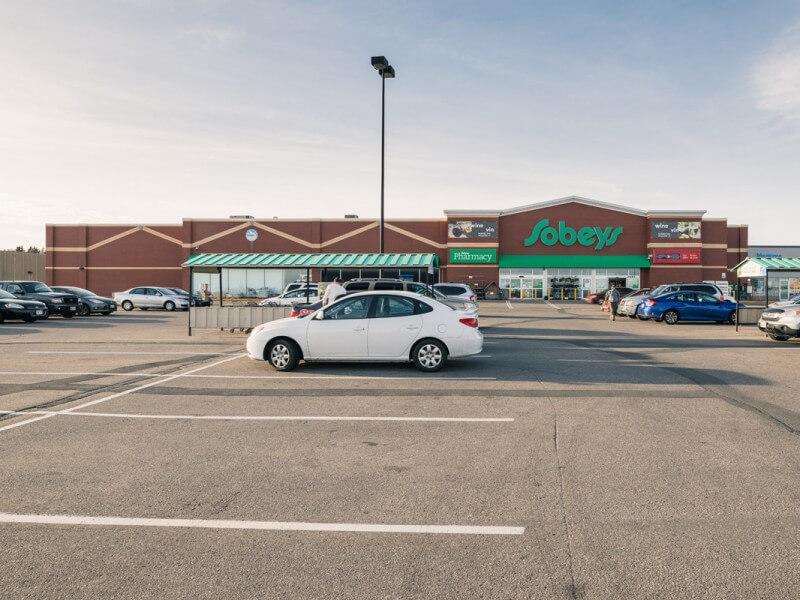
Loblaw is on the hunt for retail space in Atlantic Canada as the grocery chain looks to enhance its presence on the East Coast.
At the recent Atlantic Real Estate Forum held at the Halifax Convention Centre, Loblaw’s senior director, real estate, Arthur Cohene said the company has opened more stores in Atlantic Canada over the past year than it had in the preceding decade.
With Atlantic Canada having experienced rapid population growth from immigration during the past six years, demand for space has intensified. Moncton, for example, was the second-fastest growing metro in the country last year with 5.1 per cent growth between July 2023 and July 2024, second only to Calgary.
“Loblaw is in a real growth mode right now,” Cohene told attendees at a retail panel during the forum, held Nov. 4. “We have opened almost 80 stores in 2025… and growth for 2026 is continuing on. There is a major focus, on Loblaw's side, for the Shopper’s Drug Mart banner and our discount banners, our No Frills and Maxis.”
Growing market share for a retailer which already has such a “robust” existing network can be a challenge, he added.
“But the Atlantic (region) has been a real focus for us,” Cohene said. “We have nine stores slated to open this year. I only joined Loblaw three years ago, and prior to that, I don't think they had opened more than one store in five years or two stores in 10 years. It’s a crazy change from where we were.”
Retail remains the "hottest" asset class
The grocery giant is competing for space in what CBRE’s senior vice-president of Atlantic Canadian operations, Chris Carter, said is currently the “hottest” asset class.
“We get calls weekly from private investors, institutional investors, saying 'can you find me some retail?' ” Carter told the over-700 real estate professionals gathered for the biennial forum during an opening presentation.
Looking for new opportunities in the region has meant expanding search criteria to include smaller footprints for possible stores for Loblaw. Historically the company would have looked for 34,000-square-foot boxes for its No Frills stores, 45,000 square feet for a Real Atlantic Superstore and roughly 16,000 square feet for a Your Independent Grocer banner location.
“Those were pretty prototypical stores,” Cohene said. “Now there is a real change. We have a new president (Per Bank) and the focus is on, 'where can we enter in these markets?' Maybe smaller footprints work.”
Now Loblaw will enter a 10,000- or 13,000-square-foot space.
“We have a whole rollout of small-format stores that have been entering the Atlantic, with the No Frills banner, trying to fill in markets where we already have a pretty predominant space with our Real Atlantic stores, our Dominions,” Cohene said. “But this is now a real opportunity to bring discount to the community.
"The real drive is discount and we have noticed that the market is reacting really well to discount banners.”
Retail vs. multifamily uses
The retail panel, which was moderated by Peter Mackenzie of MackCo Retail Partners and included Chris Markides of zzap Architecture and Trevor Macleod of the Gray Group, also discussed pressures facing rapidly growing and changing municipalities. When infrastructure is needed to support a proposed development, municipalities tend to heavily favour residential development over commercial.
Cohene said some proposed Loblaw projects had not proceeded for this reason, but grocery-anchored retail has considerable benefits.
“We also realise that we are an anchor and a service that is a necessity,” he said. “So, sometimes there is a give and take… where for this parcel, it is the best use because it is going to potentially bring in all the other services, and bring in that residential, or make it easier to lease or sell your residential.”
While mixed-use developments can work well in urban markets, in many Atlantic Canada regions, Loblaw prefers a single-use site for its new stores.
“Just the operation of a store, when you have the apartments above or the condos above, it adds so much complexity to the deal,” Cohene said. “We make a lot of noise, we have trucks coming. We have HVAC units that are swirling, compressors, it’s loud. To mitigate all that, and also the challenges of the fit-up… unless you are getting in there on Day One, and they are planning that store around you, you will have so many pitfalls coming down the road.”
Development timelines create challenges
Mackenzie pointed out that urban projects can also require a longer timeline and Cohene agreed those projects present additional challenges.
“You are looking at a site… we’re probably going to get our permits, we’ll break ground, it will be three, four, five years out,” he said. “So, you are negotiating a deal that is potentially five years out and… it’s happened to me in Quebec…. The timing got stale on paper, because it was on the outside date. And now they are revisiting all the numbers, it’s basically a brand new deal again.
“So how do you negotiate, today, a deal that’s five or six years down the road, when construction costs are going where they are?”
Nevertheless, Loblaw has a new urban store coming to Halifax on Wyse Road, he said, and is in discussions with developers on a number of others.










